Structural Plan Drawing Floor Joists
This illustrated guide offers diagrams to evidence how a typical forest-frame floor is built, from floor joists to subfloor and the sill plate.
Though some floors are built on a concrete slab flat on the ground, nigh floors are raised above the ground. Raised floors are more resilient under foot and provide access for heating equipment, insulation, plumbing, wiring, and other mechanical equipment.
A raised flooring is synthetic with a wooden framework that bridges from one exterior wall to some other. This framework may or may not be supported intermediately by girders, beams, or walls.
On upper levels of a house, the underside of the flooring framing mostly serves to back ceiling materials. Ceilings are usually built just like floors, only they may exist constructed of lighter materials considering they're not intended to comport the same loads.
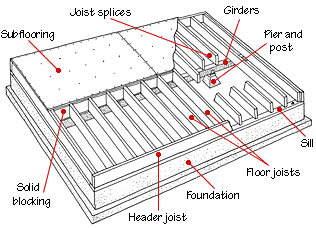
What Are Floor Joists?
A floor's framework is made upwardly by and large of wooden joists that run parallel to ane another at regular intervals. Floor joists are typically 2 by 8s, 2 past 10s, or 2 by 12s; ceiling joists are unremarkably 2 past 6s or sometimes 2 by 4s if it is an older habitation. Some newer homes have manufactured, I beam–shaped joists.
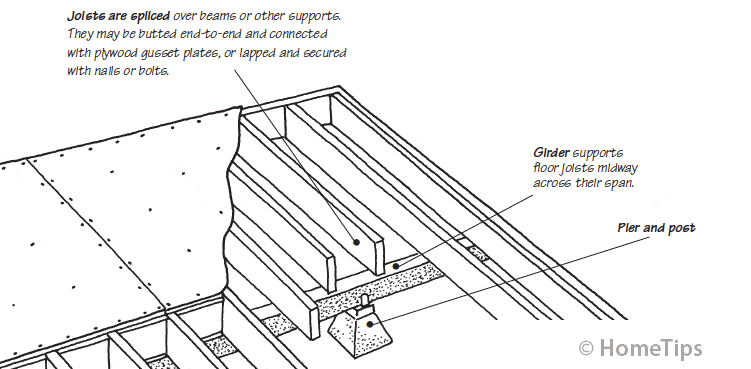
Floor joists, spaced on regular intervals, span the areas between supports such every bit walls, foundations, girders, and beams. Normal spacing is sixteen inches "on center" (from center to center), though some floors may have joists on 12-inch or 24-inch centers. Joist sizing and spacing are determined by building codes, which are based on engineering requirements. Joist headers run perpendicular to the joists, capping their ends.
Joists are spliced over beams or other supports. They may be butted end-to-end and connected with plywood gusset plates or lapped. Solid blocking or metallic bridging prevents joists from twisting and helps distribute loads evenly.
Wherever an opening occurs, such as for a staircase, joists are doubled up at the perimeter and capped with perpendicular headers.
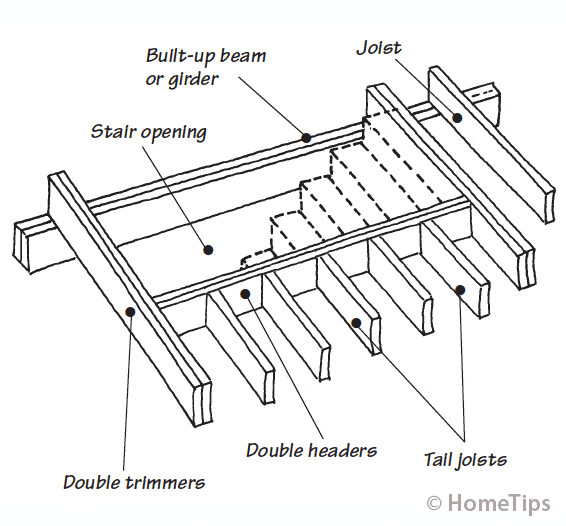
What Is a Subfloor?
Subflooring provides a base for cease flooring and also serves equally a platform during construction. It may be made of boards laid either at correct angles or diagonally across joists. Or the subfloor may exist fabricated of plywood or other panel products that are laid perpendicular to the joists.
A plywood subfloor has panels that are laid in a staggered fashion, with the ends and edges butted together; the panels are nailed (and sometimes also glued with construction adhesive) to the floor joists.
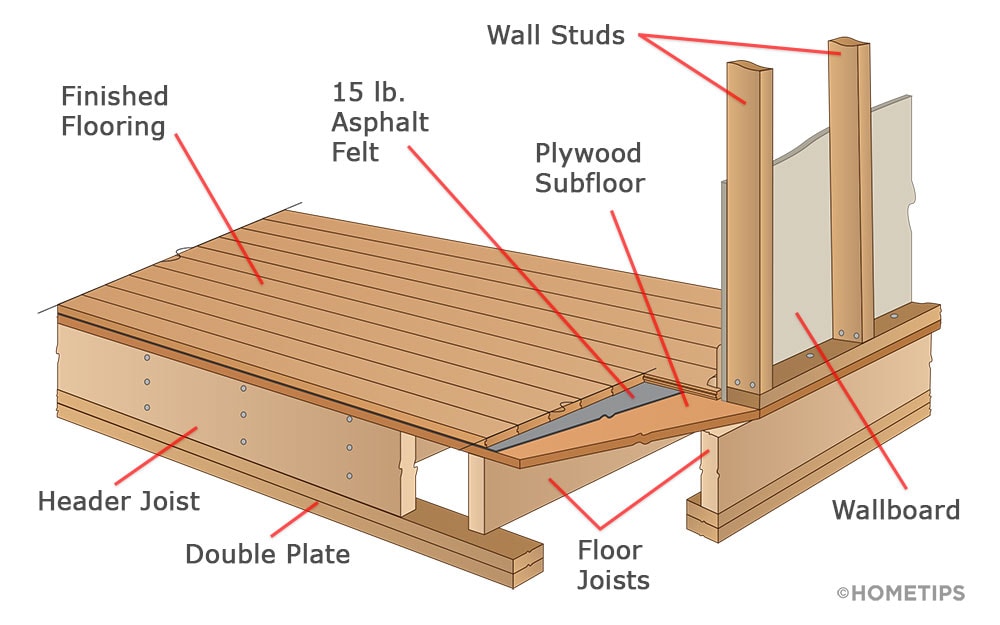
The thickness and stiffness of the subfloor determine the types of stop materials that tin can be laid on acme of information technology. If your house is built on a concrete slab, the slab can serve as a base of operations for almost any type of floor. But, if your home has a plywood or lath subfloor, it's important to check out the blazon and thickness of the material you intend to apply to determine what your limitations are. For instance, a flooring that is slightly flexible or springy is non suitable for rigid materials such as ceramic tile and stone considering the grout or materials will crack with movement.
What Is a Sill Plate?
At the foundation level, flooring joists rest directly on a sill that is treated with preservative so that contact with the foundation will non promote termites or rot. Their exact construction and connection with the wall studs depend on the method of framing that is utilized.
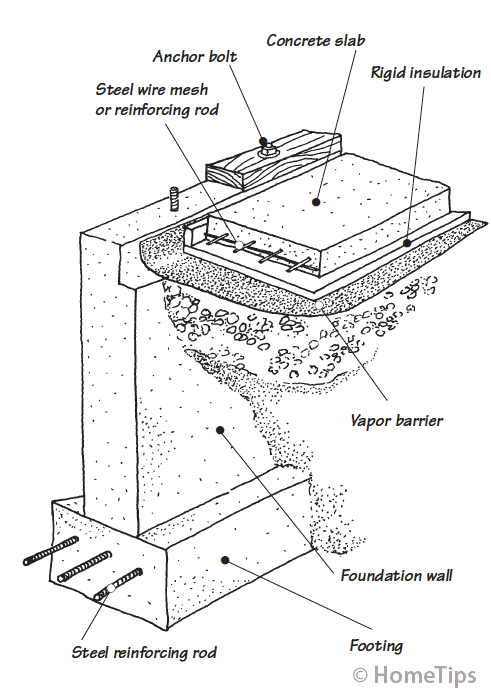
Featured Resources: Become a Pre-Screened Local House Framing Contractor
Source: https://www.hometips.com/how-it-works/floor-subflooring.html
Post a Comment for "Structural Plan Drawing Floor Joists"